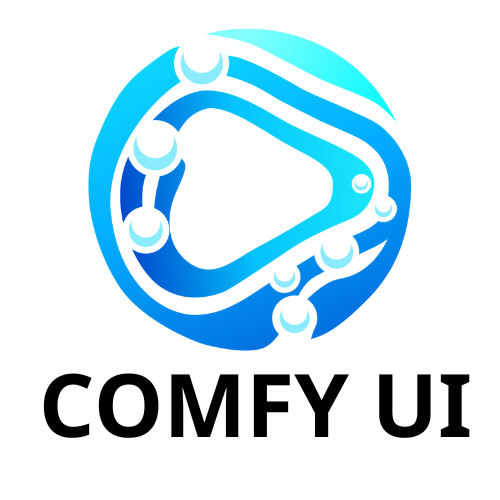Tut Video
[https://www.youtube.com/watch?v=Zko_s2LO9Wo&list=PL-pohOSaL8P9kLZP8tQ1K1QWdZEgwiBM0&index=1](Lession 1)
In this blog post, we will explore ComfyUI, a user interface framework designed for Stable Diffusion AI. This tutorial series aims to provide insights from a graphic designer’s perspective, making it accessible for everyone, regardless of their technical background. We will break down the information into episodes, allowing you to progress from beginner to advanced levels. In this first episode, we will discuss what ComfyUI is, its advantages and disadvantages, and guide you through the installation process so you can generate your first image using your own computer.
What is ComfyUI?
ComfyUI is a user interface framework that allows users to create and manage workflows by visually connecting different tasks. This approach is similar to building with Lego blocks, where each block or node represents a specific function. By connecting these nodes, users can construct complex processes with ease.
Advantages of ComfyUI
- Quick and Flexible Workflows: Users can create workflows without being limited by preset options.
- Visual Representation: Each node shows a specific function, making it easy to understand the entire process at a glance.
- Collaboration: Workflows can be easily shared, promoting collaboration among users.
- No Coding Required: Users can drag and drop nodes to create and customize workflows according to their needs.
Disadvantages of ComfyUI
- Node Organization: The arrangement of nodes can vary between workflows, which may confuse users when using others’ setups.
- Overwhelming Detail: The detailed view of processes might be overwhelming for average users who prefer simplicity.
- Learning Curve: Despite the lack of coding requirements, there is still a learning curve to effectively use nodes and build workflows.
- Performance Issues: Complex workflows can slow down your computer if it does not meet the necessary system requirements.
Despite these downsides, ComfyUI remains a powerful tool for users who require detailed control over their workflows.
Installation Process
To get started with ComfyUI, follow these steps:
- Visit the GitHub Page: Go to the ComfyUI GitHub page to find the features it supports, including stable diffusion video and audio.
- System Requirements: Ensure you have a recent operating system and a video card with sufficient VRAM. For optimal performance, an Nvidia card with at least 8GB of VRAM is recommended, along with 16GB of RAM in your system.
- Download ComfyUI: Click on the direct download link for the portable version and choose a folder to store it. For example, create a folder named “ComfyUI” on your D drive.
- Extract the Files: The downloaded archive is in 7z format. Use a tool like WinRAR to extract it. Inside the extracted folder, you will find several .bat files and a README file.
- Run the Application: Double-click on the “Run Nvidia GPU.bat” file to launch ComfyUI. A command window will open, displaying details about your graphics card.
- Access the Interface: Once the command window finishes, a new browser window will open, displaying the ComfyUI interface.
Generating Your First Image
Understanding the Interface
In the ComfyUI interface, you will see nodes that represent different functions. You can zoom in or out using the mouse wheel or shortcuts, and move the canvas around by clicking and dragging. Each node can be connected to load models, input text, create images, and save your work.
Loading Models
To generate images, you need to load a stable diffusion model. The easiest way to obtain models is by visiting the Civit AI website. Here’s how:
- Navigate to the Models Tab: Click on the tab labeled “Model” to see various types of models.
- Sort and Filter: Sort models by highest rating or most downloads. Use filters to select specific time periods or file formats.
- Download Models: Choose a model, such as the SDXL version, and download it. Place the downloaded model in the “checkpoints” folder inside the ComfyUI directory.
Configuring the Workflow
Once you have your models downloaded, you can configure your workflow:
- Refresh the Interface: If the models do not appear, refresh the ComfyUI interface.
- Select the Model: Choose the model you want to use from the list.
- Set Parameters: Adjust parameters such as width, height, sampler, steps, and CFG settings according to the model’s specifications.
- Generate the Image: Click on the “Q Prompt” button to generate the image. If all nodes turn green, the image was successfully generated.
Saving and Managing Workflows
After successfully generating images, you can save your workflow for future use:
- Save the Workflow: Click on “Save” and choose a location to store your workflow. Create a descriptive name for easy identification.
- Load Other Workflows: You can load different workflows as needed, allowing for quick testing and adjustments.
Conclusion
In this first episode of the ComfyUI tutorial series, we have covered the basics of what ComfyUI is, its advantages and disadvantages, and how to install it on your system. You have also learned how to generate your first image using different models. In future episodes, we will delve deeper into the functionalities of each node and how to build workflows from scratch. Stay tuned for more detailed explanations and tips to enhance your experience with ComfyUI!

